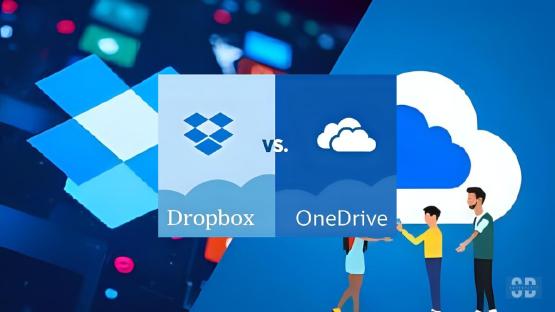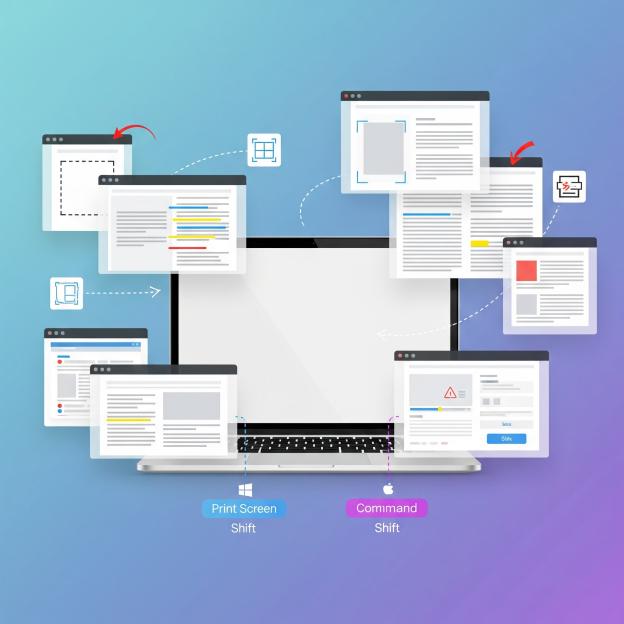Picture the last time you walked into a bustling coffee shop and instantly felt the energy of conversations swirling around you. Some words jumped out louder than others â “meeting,”; “deadline,”; “vacation”; â creating a mental snapshot of what mattered most to the people there. That’s exactly what a tag cloud does with your data: it takes the noise of information and turns it into a visual symphony where the most important elements practically leap off the screen, demanding attention and telling stories at a glance.
What Is a Tag Cloud and Why Should You Care?
A tag cloud (also known as a word cloud or text cloud) is a visual representation of text data where words appear in different sizes based on their frequency or importance. Think of it as a democratic visualization where the most popular terms get the biggest stage, while supporting players take their rightful smaller positions.
The beauty of tag clouds lies in their simplicity. Whether you’re analyzing customer feedback, social media mentions, survey responses, or website content, tag clouds instantly reveal patterns that might take hours to discover through traditional analysis methods.
Key Benefits of Tag Clouds:
- Instant pattern recognition â Spot trends in seconds
- Engaging visual appeal â Transform boring data into eye-catching graphics
- Easy interpretation â No training required to understand the message
- Versatile applications â Perfect for presentations, reports, and social media
- Cost-effective analysis â Many free tools available
Popular Tag Cloud Applications Across Industries
Marketing and Social Media Analysis
Marketing professionals use tag clouds to analyze brand mentions, hashtag performance, and customer sentiment. By creating word clouds from social media comments, marketers can quickly identify trending topics, customer pain points, and positive associations with their brand.
Real-world example: A restaurant chain created tag clouds from customer reviews and discovered that “slow service”; appeared prominently, leading to operational improvements that increased customer satisfaction by 23%.
Educational Content Analysis
Teachers and researchers utilize tag clouds to analyze student feedback, research papers, and curriculum content. This visual approach helps identify knowledge gaps, popular topics, and areas requiring additional focus.
Business Intelligence and Reporting
Corporate teams create tag clouds from meeting notes, project documentation, and employee feedback to identify recurring themes, priorities, and organizational focus areas.
Content Creation and SEO
Bloggers, content creators, and SEO specialists use tag clouds to analyze competitor content, identify keyword opportunities, and visualize their own content themes for better strategic planning.
Step-by-Step Guide: How to Create Your First Tag Cloud
Method 1: Using Free Online Tag Cloud Generators
WordClouds.com (Recommended for Beginners)
- Navigate to WordClouds.com
- Input your text â Copy and paste your content or upload a text file
- Customize appearance:
- Choose from 50+ fonts
- Select color schemes
- Adjust word density
- Set maximum words limit (typically 100-200 for clarity)
- Generate and download â Export in PNG, JPG, or SVG formats
Pro tip: Use the “Remove common words”; feature to filter out articles, prepositions, and other non-meaningful terms.
Wordle Alternative: WordArt.com
- Access WordArt.com
- Import data â Upload text files, paste content, or connect social media accounts
- Design customization:
- Select from hundreds of shapes
- Apply professional color palettes
- Adjust font combinations
- Control word spacing and orientation
- Export options â High-resolution downloads available
Method 2: Advanced Tag Cloud Creation with Programming
Python with WordCloud Library
For data scientists and developers, Python offers powerful tag cloud creation capabilities:
from wordcloud import WordCloud import matplotlib.pyplot as plt # Basic tag cloud creation text = "your text data here" wordcloud = WordCloud(width=800, height=400, background_color='white').generate(text) plt.figure(figsize=(10, 5)) plt.imshow(wordcloud, interpolation='bilinear') plt.axis('off') plt.show() R Programming with wordcloud2 Package
R users can create interactive tag clouds:
library(wordcloud2) data <- read.csv("your_text_data.csv") wordcloud2(data, size=1.6, color='random-dark') Method 3: Excel and Google Sheets Tag Cloud Add-ins
Excel PowerBI Integration
- Enable PowerBI in Excel
- Install Word Cloud visual
- Import your data
- Configure visual settings
- Customize colors and fonts
Google Sheets with Tag Cloud Add-ons
- Open Google Sheets
- Navigate to Add-ons > Get add-ons
- Search for “Word Cloud Generator”;
- Install and authorize
- Select data range and generate
Professional Tag Cloud Design Best Practices
Color Psychology and Brand Alignment
Choose colors that align with your brand identity and purpose:
- Blue tones â Trust, reliability, professional contexts
- Green shades â Growth, nature, positive sentiment
- Red accents â Urgency, importance, attention-grabbing
- Neutral palettes â Modern, clean, versatile applications
Typography and Readability Guidelines
Font Selection Rules:
- Sans-serif fonts for digital displays
- Maximum 3 font families per tag cloud
- Consistent font weights for professional appearance
- Readable contrast ratios (minimum 4.5:1)
Size Hierarchy Best Practices:
- Largest words should be 3-5x bigger than smallest
- Medium-sized words bridge the gap smoothly
- Minimum readable size varies by application (12px for web, 14pt for print)
Layout and Composition Strategies
Shape Selection:
- Rectangular layouts â Professional, report-friendly
- Custom shapes â Brand logos, relevant icons
- Circular arrangements â Balanced, harmonious feeling
- Random clusters â Organic, creative appearance
Word Positioning:
- Horizontal orientation â Easiest to read
- Mixed orientations â More dynamic, space-efficient
- Curved text paths â Creative but potentially less readable
Advanced Tag Cloud Techniques and Customization
Data Preprocessing for Better Results
Text Cleaning Strategies:
- Remove stop words â Articles, prepositions, common verbs
- Normalize case â Consistent capitalization
- Handle synonyms â Combine related terms
- Filter by relevance â Remove irrelevant terms
- Lemmatization â Reduce words to root forms
Frequency Weight Adjustments:
- Manual boosting â Emphasize important but infrequent terms
- Category weighting â Different importance for different word types
- Sentiment scoring â Size based on emotional impact
- Temporal relevance â Recent mentions weighted higher
Interactive Tag Cloud Features
Clickable Elements:
- Hyperlinks â Connect words to detailed information
- Hover effects â Display additional context
- Drill-down capabilities â Explore underlying data
- Filter controls â Real-time customization
Animation and Transitions:
- Fade-in effects â Gradual revelation
- Rotation animations â Dynamic word positioning
- Zoom interactions â Focus on specific terms
- Color transitions â Highlight different categories
Tag Cloud Tools Comparison: Free vs Premium Options
Free Tag Cloud Tools
WordClouds.com
- Pros: User-friendly interface, good customization options
- Cons: Limited export formats, watermark on free version
- Best for: Beginners, quick visualizations
WordArt.com
- Pros: Extensive shape library, professional templates
- Cons: Registration required, limited free exports
- Best for: Creative projects, social media content
Jason Davies’ Word Cloud Generator
- Pros: No registration, simple interface, fast generation
- Cons: Basic customization, limited formatting options
- Best for: Quick, simple visualizations
Premium Tag Cloud Solutions
Tableau
- Price: $75/month per user
- Features: Advanced analytics, interactive dashboards, enterprise integration
- Best for: Business intelligence, complex data analysis
Power BI
- Price: $10/month per user
- Features: Microsoft ecosystem integration, collaborative features
- Best for: Corporate environments, team collaboration
MonkeyLearn WordCloud API
- Price: $299/month for professional plans
- Features: API access, sentiment analysis, batch processing
- Best for: Developers, automated workflows
Common Tag Cloud Mistakes and How to Avoid Them
Design Pitfalls
Overcrowding Issues:
- Problem: Too many words creating visual noise
- Solution: Limit to 50-100 most relevant terms
- Best practice: Use filtering to focus on meaningful content
Poor Color Choices:
- Problem: Low contrast, clashing colors, hard to read
- Solution: Test readability across different devices
- Best practice: Stick to brand colors with good contrast ratios
Inconsistent Sizing:
- Problem: Size differences don’t reflect actual importance
- Solution: Review frequency data and adjust manually if needed
- Best practice: Maintain logical size hierarchies
Data Quality Issues
Inadequate Text Preprocessing:
- Problem: Meaningless words dominate the visualization
- Solution: Implement comprehensive stop word lists
- Best practice: Review and clean data before visualization
Biased Sample Size:
- Problem: Results don’t represent the full dataset
- Solution: Ensure representative sampling methods
- Best practice: Document data sources and limitations
SEO and Marketing Applications for Tag Clouds
Keyword Research and Content Strategy
Tag clouds excel at revealing keyword opportunities and content gaps:
Competitor Analysis:
- Scrape competitor content using tools like Screaming Frog
- Create tag clouds from their most popular pages
- Identify keyword gaps in your own content strategy
- Develop content plans targeting underutilized terms
Content Audit Visualization:
- Export your website content via CMS or crawling tools
- Generate tag clouds by page category or content type
- Spot overoptimization â words appearing too frequently
- Discover content themes for better internal linking
Social Media Engagement Strategy
Hashtag Research:
- Analyze trending hashtags in your industry
- Identify seasonal patterns in social conversations
- Optimize posting schedules based on popular terms
- Create targeted content around emerging topics
Community Listening:
- Monitor brand mentions across social platforms
- Track sentiment changes over time
- Identify influencer topics for collaboration opportunities
- Respond to emerging issues before they escalate
Integration with Analytics and Business Intelligence
Google Analytics Integration
Custom Dashboard Creation:
- Export search query data from Google Analytics
- Create monthly tag clouds showing search trends
- Identify seasonal patterns in user behavior
- Optimize content calendar based on search interest
Conversion Analysis:
- Analyze converting keywords through tag cloud visualization
- Identify high-value terms for paid advertising
- Optimize landing pages around converting search terms
- Track performance changes over time
Customer Feedback Analysis
Survey Response Visualization:
- Collect open-ended survey responses
- Process text through sentiment analysis
- Create tag clouds showing customer priorities
- Develop action plans based on feedback themes
Support Ticket Analysis:
- Categorize common issues through tag cloud visualization
- Identify training opportunities for support staff
- Prioritize product improvements based on complaint frequency
- Track resolution effectiveness over time
Future Trends in Tag Cloud Technology
Artificial Intelligence Integration
Sentiment-Aware Tag Clouds:
Modern AI can analyze emotional context, creating tag clouds where word size reflects not just frequency but emotional impact and sentiment score.
Predictive Tag Clouds:
Machine learning algorithms can predict trending topics before they peak, allowing businesses to stay ahead of market conversations.
Interactive and Dynamic Visualizations
Real-Time Data Streams:
Tag clouds that update continuously based on live data feeds from social media, news sources, or customer interactions.
Multi-Dimensional Analysis:
Advanced visualizations that incorporate time, geography, and demographic data alongside traditional word frequency.
Mobile-First Design Considerations
Responsive Tag Clouds:
Visualizations that automatically adjust layout and readability for different screen sizes and interaction methods.
Touch-Optimized Interactions:
Enhanced mobile experiences with gesture-based navigation and touch-friendly interfaces.
Measuring Tag Cloud Effectiveness
Engagement Metrics
Website Analytics:
- Time on page â Longer engagement with tag cloud content
- Bounce rate reduction â Visual appeal keeping visitors engaged
- Click-through rates â Interactive elements driving further exploration
- Social sharing â Visual content performing better on social platforms
Content Performance:
- Improved comprehension â Faster information processing
- Better recall â Visual memory enhancement
- Increased accessibility â Multiple learning styles accommodation
- Enhanced storytelling â Data narratives becoming more compelling
Business Impact Assessment
Decision Making Speed:
- Faster pattern recognition â Reduced analysis time
- Improved stakeholder communication â Visual data more persuasive
- Enhanced collaboration â Shared understanding through visualization
- Better resource allocation â Clear priorities from visual data
ROI Measurement:
- Reduced analysis costs â Automated visual generation
- Improved marketing effectiveness â Better targeting through insights
- Enhanced customer satisfaction â Responding to visual feedback patterns
- Increased competitive advantage â Faster market insight generation
Conclusion: Transform Your Data Communication Strategy
Tag clouds represent more than just a visualization technique â they’re a bridge between complex data and human understanding. In our information-saturated world, the ability to quickly communicate patterns, priorities, and insights through visual storytelling has become essential for business success.
Whether you’re a marketing professional seeking to understand customer sentiment, an educator analyzing student feedback, or a business leader looking to communicate strategic priorities, tag clouds offer an accessible and powerful solution.
The key to success lies in choosing the right tools for your specific needs, following design best practices, and continuously refining your approach based on audience feedback and business objectives. Start simple with free online tools, experiment with different styles and approaches, and gradually incorporate more advanced techniques as your confidence and requirements grow.
Remember that the most beautiful tag cloud is meaningless without clean data and clear purpose. Invest time in proper data preparation, understand your audience’s needs, and always prioritize clarity over complexity.
As visual communication continues to evolve, tag clouds will remain a fundamental tool for transforming data into stories that resonate, inform, and inspire action. The question isn’t whether you should use tag clouds â it’s how creatively and effectively you’ll implement them to achieve your communication goals.
Ready to create your first tag cloud? Start with your most recent customer feedback, social media mentions, or content analysis project. Choose a free tool, experiment with different designs, and discover the patterns hiding in your data. Your audience â and your insights â will thank you for making complex information beautifully simple.








